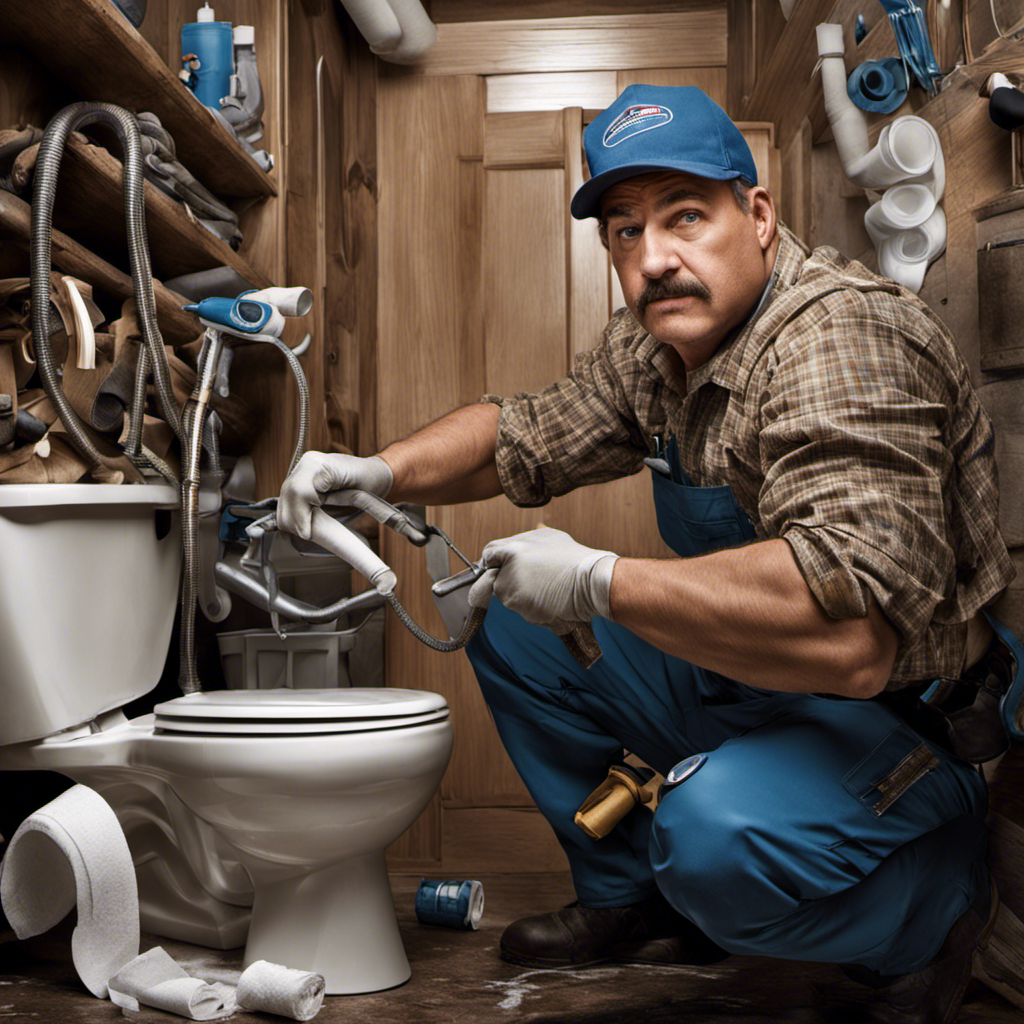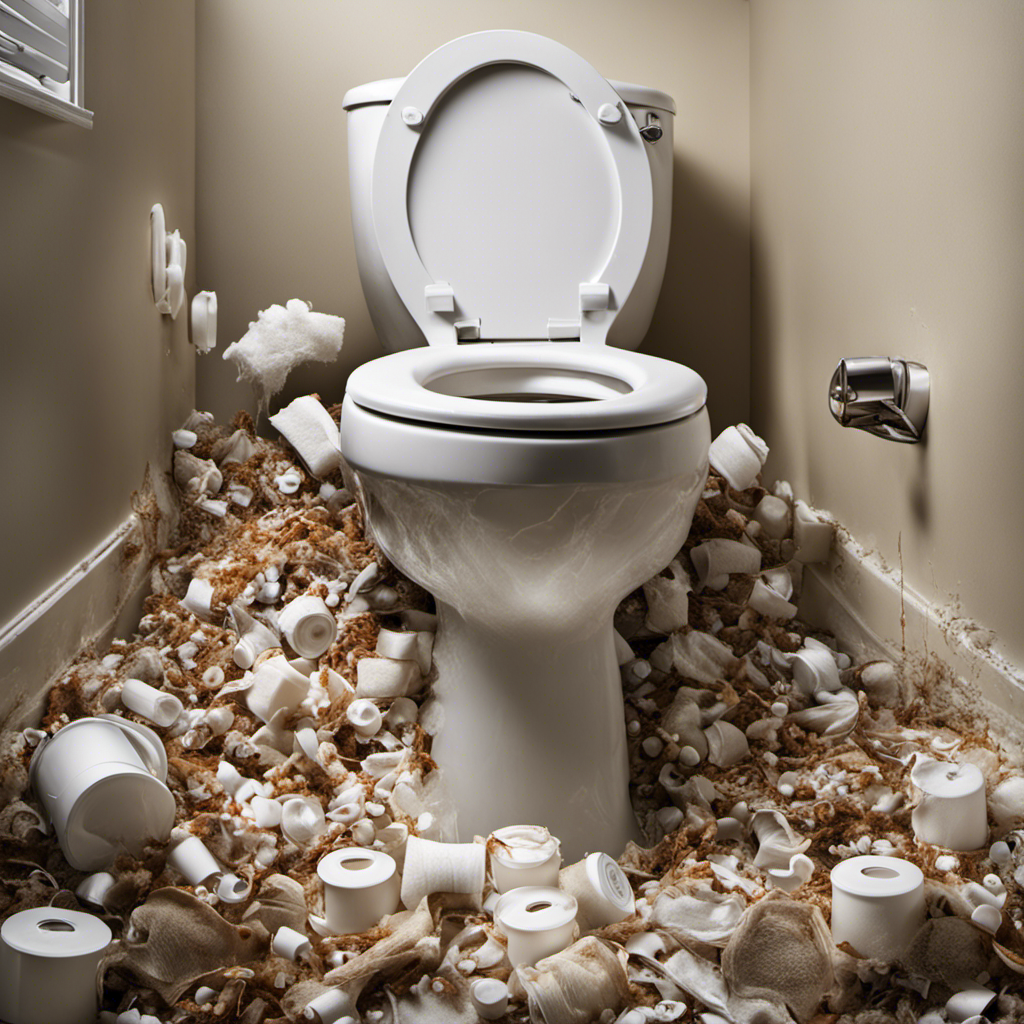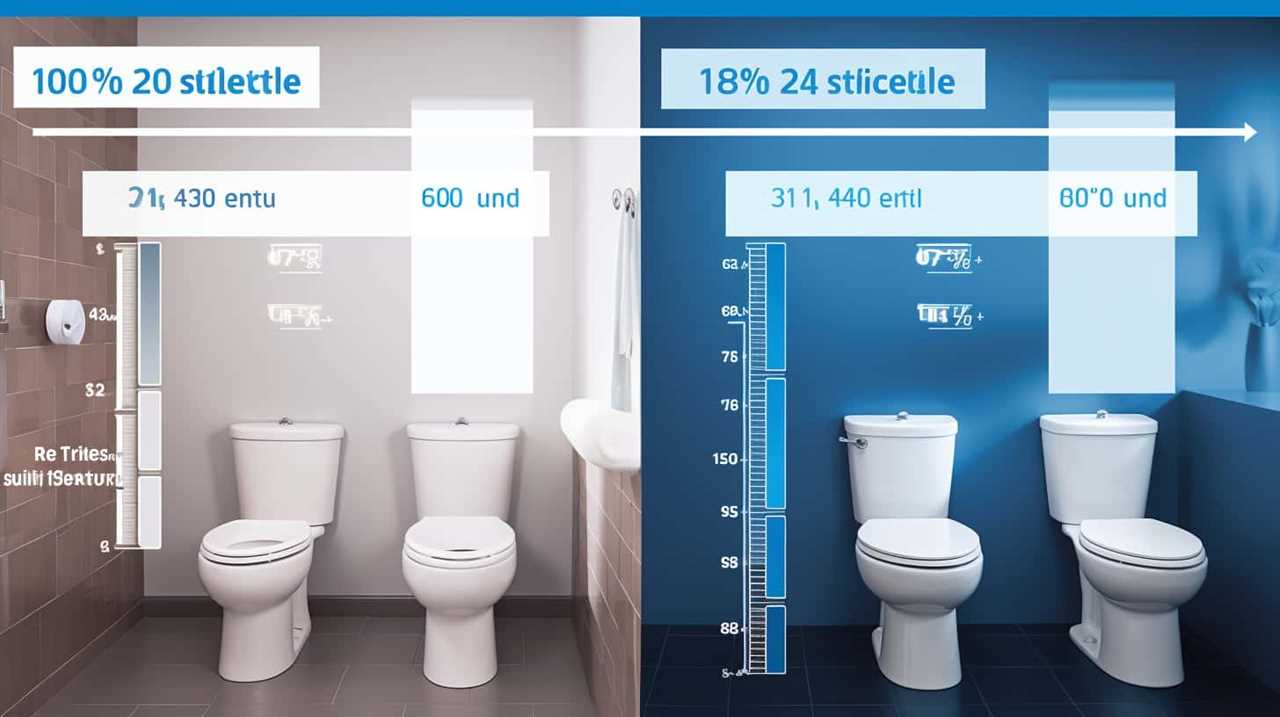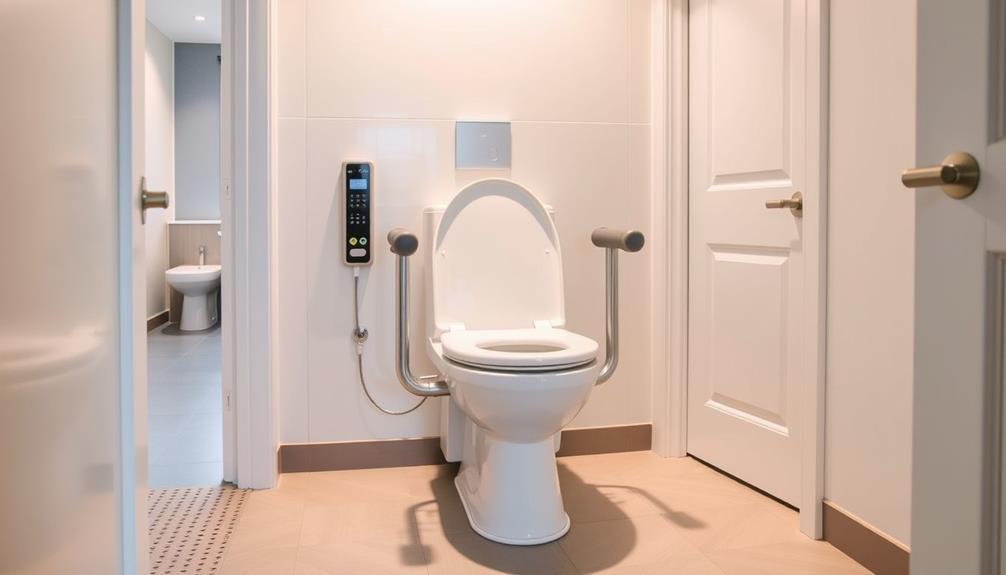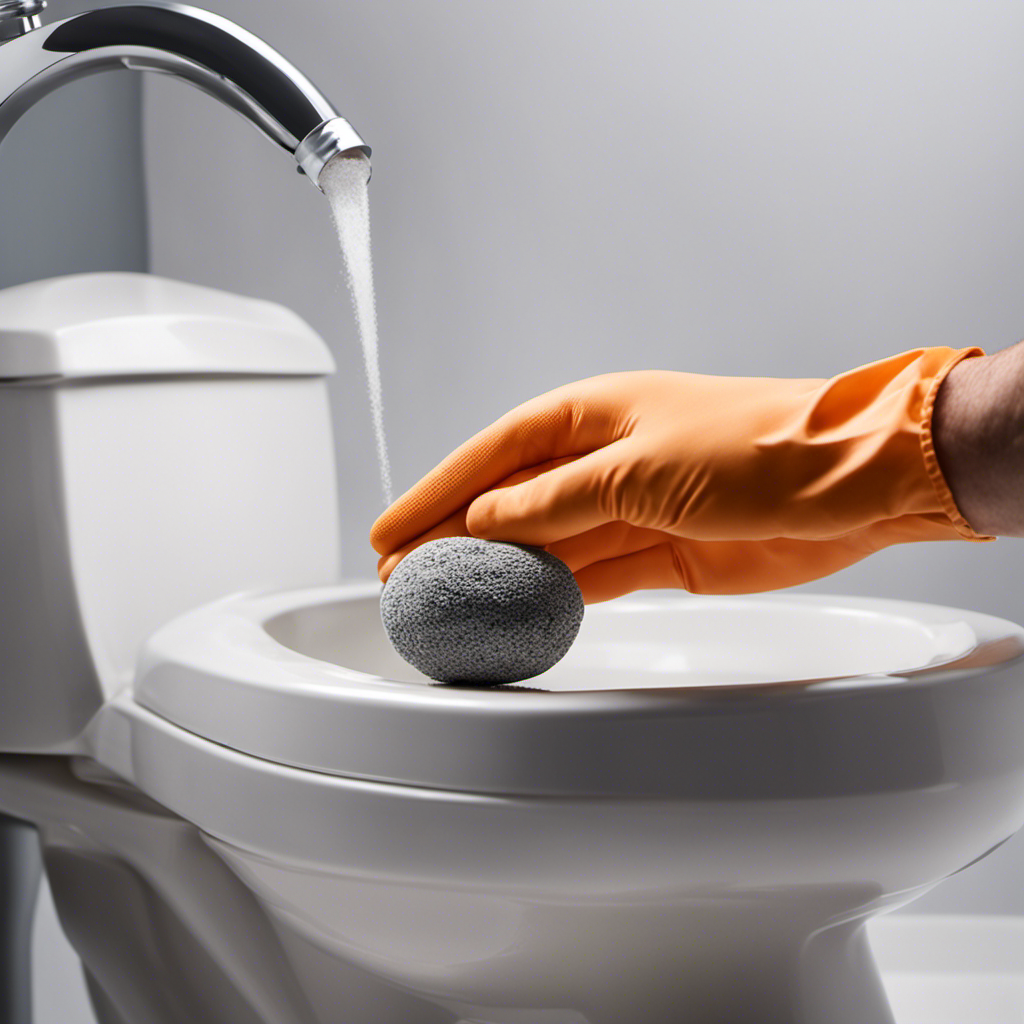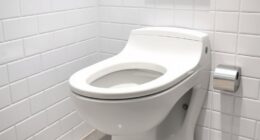Did you know that toilet paper clogs in sewer lines are not very common? However, when they do occur, they can cause major headaches for homeowners.
In this article, we will explore the causes of toilet paper clogs, the importance of prevention, and effective methods for clearing them.
From flushing smaller bundles of toilet paper to using chemical additives like RID-X, we will provide you with practical tips to keep your sewer lines free from pesky clogs.
So, let’s dive in and learn how to prevent and clear toilet paper clogs in sewer lines.
Key Takeaways
- Flushing smaller bundles of toilet paper and avoiding flushing large chunks can prevent clog formation in sewer lines.
- Regularly using a toilet cleaner and periodically cleaning the toilet can help prevent the buildup of toilet paper and other debris.
- Using methods such as pouring Epsom salt, using chemical additives like RID-X, using dish soap, using a plunger, or using a closet auger can help dissolve toilet paper clogs in sewer lines.
- While toilet paper is biodegradable and usually dissolves in 30 minutes or less, it is still possible for it to cause clogs in sewer lines, but this is not very common. Proper maintenance and responsible flushing habits can help prevent toilet paper clogs.
Causes of Toilet Paper Clogs in Sewer Lines
Flushing too much toilet paper at once can stretch and twist it, forming a clog in the drainpipe. This is one of the common causes of sewer line clogs. When too much toilet paper is flushed, it can become too big for the pipes to handle and curl up like a ball, obstructing the flow of water.
Additionally, toilet paper can also stick to an existing partial clog and form a larger waste ball, further blocking the sewer line. To prevent such clogs, it is important to follow certain strategies.
Flushing smaller bundles of toilet paper at a time can help prevent clog formation. Regularly using a toilet cleaner can also help eliminate potential clogs. It is crucial to only flush toilet paper, urine, and feces to prevent clogs in sewer lines.
Understanding these prevention strategies is essential for maintaining a functional plumbing system.
Importance of Prevention for Toilet Paper Clogs
Regularly maintaining and using toilet cleaner can help prevent the formation of new clogs in the plumbing system. It is important to understand the strategies for preventing toilet paper clogs and debunk common misconceptions.
Flushing smaller bundles of toilet paper can prevent clog formation in sewer lines. Preventing clogs by flushing only toilet paper, urine, and feces is crucial. Periodically using a toilet cleaner can help prevent the formation of new clogs. Understanding the importance of prevention is key to maintaining a functional plumbing system.
Clean your toilet periodically to prevent the buildup of toilet paper and other debris. Avoid flushing large chunks of toilet paper and flush small amounts at a time to prevent clogging. Maintain a highly functional bathroom throne by practicing prevention.
Regular maintenance and responsible flushing habits can help prevent future clogs. Preventing clogs saves you from the hassle of dealing with unclogging methods.
Methods to Dissolve Toilet Paper in Sewer Lines
Pouring Epsom salt into the toilet bowl can effectively break down and dissolve toilet paper clogs in sewer lines. In addition to Epsom salt, there are other toilet paper dissolving agents and alternative methods for clearing toilet paper clogs. One such method is using a chemical additive like RID-X, which works almost instantly to break down the clog. Dish soap can also be poured into the toilet bowl and flushed to remove clogs. Using a plunger to create suction or inserting a closet auger into the toilet drain can physically dislodge the clog. Another option is to mix vinegar and baking soda and pour it down the toilet to dissolve the toilet paper. These methods offer effective solutions for clearing toilet paper clogs and ensuring a properly functioning plumbing system.
| Dissolving Agents | Alternative Methods |
|---|---|
| Epsom salt | RID-X |
| Dish soap | Plunger |
| Vinegar and baking soda | Closet auger |
Dissolving Time of Toilet Paper in Pipes
Toilet paper typically dissolves in pipes within 30 minutes or less, ensuring that it does not obstruct the flow of water through the plumbing system. This rapid degradation of toilet paper is due to its biodegradable nature.
Flushing habits play a significant role in the impact on toilet paper degradation. By flushing smaller amounts of toilet paper at a time, individuals can reduce the risk of clogs in sewer lines. On the other hand, flushing too much toilet paper simultaneously can cause it to stretch and twist, forming a clog in the drainpipe.
It is crucial to understand the importance of prevention and practice responsible flushing habits to maintain a functional plumbing system. Regular maintenance, periodic cleaning, and the use of toilet cleaners can also help prevent the formation of clogs and maintain a highly functional bathroom throne.
Effectiveness of RID-X for Clearing Toilet Paper Clogs
RID-X is widely recognized as an effective solution for breaking down and eliminating clogs caused by toilet paper. Its effectiveness surpasses that of other chemical additives commonly used for clearing toilet paper clogs.
While there are alternative methods for clearing such clogs, RID-X remains a trusted brand in the industry. The product works almost instantly, dissolving the toilet paper and restoring the flow in the sewer lines. This saves time and effort in unclogging the system.
However, it is important to note that proper maintenance and responsible flushing habits can also prevent toilet paper clogs. Flushing small amounts of toilet paper at a time reduces the risk of clogging, and other methods such as using a plunger or a closet auger can be used as alternatives to RID-X.
Possibility of Toilet Paper Clogging a Sewer Line
Flushing excessive amounts of toilet paper at once increases the likelihood of clogging in the sewer system. While toilet paper is water-soluble and quickly dissolves, there is still a possibility of it causing clogs in sewer lines.
However, toilet paper clogs in sewer lines are not very common. In most cases, if toilet paper does block the toilet, it likely got stuck to existing debris in the plumbing system.
To prevent this, it is important to flush small amounts of toilet paper at a time. Proper maintenance of plumbing systems can also help prevent toilet paper clogs.
Tips for Preventing and Clearing Toilet Paper Clogs in Sewer Lines
Regular maintenance and responsible flushing habits can go a long way in preventing future clogs in sewer lines. To prevent clogs, it is important to flush smaller bundles of toilet paper and avoid flushing large chunks at once. Using a toilet cleaner regularly can help eliminate potential clogs. Additionally, practicing prevention by only flushing toilet paper, urine, and feces is crucial.
In the event of a clog, there are various clog removal techniques that can be utilized. These include pouring Epsom salt or a chemical additive like RID-X into the toilet bowl to dissolve the clog. Using dish soap, a plunger, or a closet auger can also help dislodge the clog.
Understanding the importance of prevention and utilizing effective clog removal techniques is key to maintaining a functional plumbing system.
Frequently Asked Questions
Can Flushing Too Much Toilet Paper at Once Cause Damage to the Plumbing System?
Flushing excessive amounts of toilet paper at once can strain the plumbing system, potentially leading to clogs and damage. To prevent toilet paper clogs, it’s important to flush smaller bundles and practice regular maintenance.
What Are Some Other Common Causes of Sewer Line Clogs Besides Toilet Paper?
Other common causes of sewer line clogs include grease buildup, tree roots infiltrating the pipes, foreign objects flushed down the toilet, and outdated plumbing systems. Regular maintenance and avoiding improper disposal can prevent sewer line clogs.
Are There Any Natural Alternatives to Chemical Additives Like RID-X for Dissolving Toilet Paper Clogs?
There are natural alternatives to chemical additives like RID-X for dissolving toilet paper clogs. Using enzyme-based products has the benefit of breaking down the clog without harsh chemicals, providing an eco-friendly solution.
How Long Does It Typically Take for Toilet Paper to Dissolve in the Sewer Lines?
Toilet paper typically dissolves in sewer lines within 30 minutes or less. However, excessive usage can impact sewer lines, causing clogs. Proper maintenance and responsible flushing habits are key in preventing these issues.
Can Using RID-X Prevent Future Toilet Paper Clogs From Occurring?
Using RID-X can effectively prevent future toilet paper clogs from occurring. It works instantly to break down toilet paper, but there are alternative methods such as using Epsom salt, dish soap, a plunger, or a closet auger.
Conclusion
In conclusion, preventing and clearing toilet paper clogs in sewer lines is crucial for maintaining a healthy plumbing system. By following simple tips like flushing smaller bundles of toilet paper and regularly using a toilet cleaner, individuals can avoid clogs caused by excessive paper buildup.
In the event of a clog, there are various effective methods such as using Epsom salt or chemical additives like RID-X. Remember, responsible flushing habits and proper maintenance can save you from the frustration and inconvenience of a clogged sewer line.
Don’t let your plumbing become a tangled mess of toilet paper; take action today!
